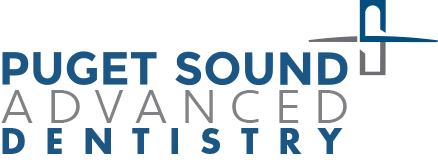Resources
Choosing the best option for improving your mouth’s functioning and appearance can be overwhelming. We selected these resources to help explain different procedures and what kinds of experts to look for.
Cosmetic Dentistry
Cosmetic dentistry includes a variety of treatments aimed at improving the appearance of your teeth. Procedures include bleaching, bonding, veneers, reshaping, orthodontics and implants.
The four elements of a natural-looking smile are: shade, shape, symmetry and strength. Shade refers to the color of the teeth. They should be naturally white and maintain a pearly translucency. Teeth should also have a natural shape. Crooked or chipped teeth can detract from an otherwise nice smile. Symmetry refers to the overall evenness of the teeth and gum line. Strength refers to the teeth’s function. Strong teeth are healthy teeth, and a smile cannot be truly perfect unless it is healthy.
General Dentistry
General dentistry concerns the health and maintenance of your teeth and gums, such as cleanings, repairs and disease prevention. General dentistry helps maintain your smile and healthy teeth throughout your lifetime.
General dentistry focuses on wellness and prevention. This includes an overall health assessment and examination of teeth, gums, jaw and mouth. Early intervention helps you avoid costly procedures and potential health concerns down the road.
Hygiene Services
Dental hygiene is foundational to your overall health. Hygiene services help keep your teeth, gums and mouth healthy and fully functional. Services typically include routine cleanings, polishing and fluoride treatments when indicated. Advanced hygiene services include oral cancer screenings and periodontal therapy for people with mild to severe gum disease.
Implant Dentistry
Modern implant technology offers natural-looking tooth substitutes that work as well as natural teeth for most people.
Implants offer durable solutions to a variety of problems.
- Replace a single tooth lost because of injury or accident without involving other teeth (no bridge)
- Secure lower plate dentures to improve stability, function and appearance
- Full or partial mouth tooth replacements needed due to accident, illness or decay
Implant dentistry replaces missing teeth with a combination of strong structures.
First, a surgical device—the dental implant—is fused to bone. The implant supports the visible tooth replacement: a crown, bridge, denture or facial prosthetic. The implant can also act as an anchor for complex orthodontics and braces.
When needed, other functional components may be attached to the implant device including an abutment to pass through the gums, an abutment screw to secure the abutment to the implant and prosthetic teeth which attach to the abutment. Collectively, the fixture and components create the dental prosthetic.
Prosthetic Dentistry
Prosthetic Dentistry is the practice of creating replacement components for missing or damaged teeth and related oral structures. A Prosthodontist is a dentist with three years’ additional training in restoring the mouth to maximum function and esthetic appearance.
Prosthodontics is recognized by the ADA (American Dental Association) as one of nine dental specialties. Less than two percent (2%) of all dentists are Prosthodontists.
Prosthodontic services include complex restorative procedures and some that general dentists perform with less training.
- Ceramic Crowns or “caps”
- Changing Tooth Shape
- Closing Gaps Between Teeth
- Cosmetic Dentistry
- Esthetic Reconstructive Dentistry
- Dental Implants for single and multiple tooth replacement
- Facial Prosthetics
- Fixed Bridge
- Full and Partial Dentures
- Porcelain Veneers
- Single and Full Arch Replacements
- Teeth Whitening or “bleaching”
A Prosthodontist can restore broken, decayed, worn and discolored teeth to their original shape and color through implant and other restorative dentistry techniques.
Restorative Dentistry
Restorative dentistry is the study, diagnosis and integrated management of diseases of the teeth and their supporting structures. Everything from cavity fillings to oral surgery to full mouth tooth replacement is considered restorative dentistry.
Prosthodontics is a specialized practice within restorative dentistry, which also includes endodontics and periodontics. These three disciplines often work together and with a person’s general dentist to create the best solution for an individual with complex needs.






Schmidt Family Health Center
4418 Rucker Ave, Everett WA, 98203
Phone: (425) 374-3226
Fax: (425) 374-8394
Hours
Monday Through Thursday
7:30 am to 5:00 pm
